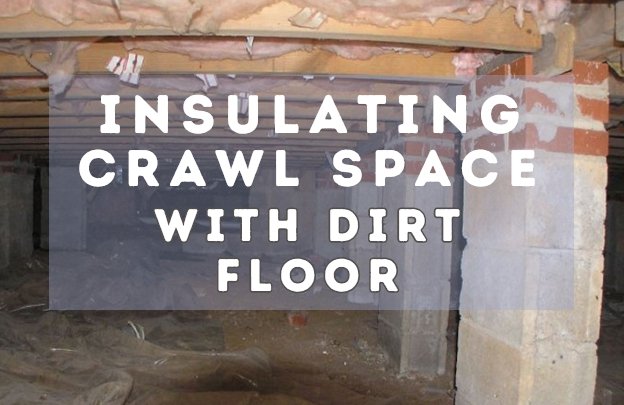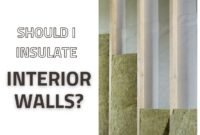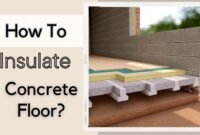Crawl space insulation is a game-changer for homeowners seeking a comfortable and energy-efficient living environment. Without proper insulation, the space beneath our homes can become a source of cold drafts, leading to increased energy bills and a home that feels cold.
Additionally, uninsulated crawl spaces can attract unwanted pests and compromise indoor air quality.
You can unlock many benefits that improve daily living and add value to your property by addressing the insulation needs of a crawl space with a dirt floor. It’s time to give this often-overlooked space the attention it deserves.
4 Reasons to Insulating Crawl Space With Dirt Floor
There are many benefits from insulating your crawl space with a dirt floor, such as:
● Enhanced Comfort
When a crawl space is left uninsulated, it becomes a source of cold drafts, especially during the colder months. This can result in uneven temperatures throughout the house, with some rooms feeling notably colder.
Properly insulating the crawl space, including sealing air leaks around floor joists and rim joists, can significantly improve the warmth and comfort of your living spaces. It can result in uneven temperatures throughout the house, with some rooms feeling notably colder.

Insulating the crawl space effectively blocks this cold air, leading to a more consistent and comfortable indoor temperature.
● Energy Efficiency
An uninsulated crawl space allows the warm air inside your home to escape while letting the cold air in. This situation forces your heating system to work overtime to maintain a comfortable temperature.
Insulating the crawl space and addressing air leaks can create a more energy-efficient home and reduce the strain on your heating system. This situation forces your heating system to work overtime to maintain a comfortable temperature.
The result? Skyrocketing energy bills. Insulating your crawl space acts as a thermal blanket, reducing the amount of heat loss.
● Improved Air Quality
A dirt floor in a crawl space can be a breeding ground for moisture, which can lead to mold growth and poor indoor air quality. To combat this, it’s essential to have a proper drainage system, potentially including a sump pump, to manage moisture levels effectively.
Insulating the crawl space with a vapor barrier can also help control moisture and improve air quality. When moisture levels rise, it creates an ideal environment for mold and mildew to thrive.
These fungi release spores that can find their way into your living space, potentially leading to respiratory issues and allergies.
By insulating the crawl space, you’re effectively sealing off this source of moisture, ensuring that the air quality inside your home remains pristine.
● Protection Against Pests
Damp, dark, and unprotected crawl spaces are an open invitation for pests. Rodents, insects, and other critters find such environments ideal for nesting. Once they settle in, they can cause structural damage, create unpleasant odors, and even pose health risks.
Insulating your crawl space deters pests by eliminating their preferred damp and dark environment. It also acts as a physical barrier, preventing them from entering your home.
Proper insulation, especially around rim joists and floor joists, can significantly reduce the likelihood of pest infestations and improve the overall health of your home.”
How Can You Utilize Foam Board to Insulate a Crawl Space?
Let’s focus on the practical steps of insulating your crawl space using a foam board. This material is favored for its efficiency and ease of installation.
● Do Your Preparation
Start by thoroughly cleaning the crawl space, ensuring that you remove any debris, old insulation, or other obstructions. A clean surface ensures the foam board adheres properly and provides maximum insulation.
Read also: Insulate Garage Ceiling With Foam Board
Moreover, a dry environment is essential. If there’s any sign of moisture, it’s vital to address it first, as dampness can compromise the insulation’s effectiveness and longevity.
● Lay Down a Vapor Barrier
A vapor barrier, typically crafted from plastic or foil, stops moisture from penetrating the insulation. This barrier is a protective layer, keeping the foam board dry and efficient.
Spread the barrier evenly across the floor, overlapping the edges by at least 12 inches, and secure it using tape or staples.
● Install the Foam Board
Measure the crawl space walls and cut the foam board to fit these dimensions. When attaching the foam board to the walls, ensure it sits flush against the surface, leaving no gaps.
You can use adhesive or mechanical fasteners to secure the board in place. Remember, the tighter the fit, the better the insulation.
Read also: Cheap Way to Insulate Block Walls in Your Home
● Seal the Edges
After installing the foam board, it’s essential to seal off any potential entry points for air or moisture. Seal the edges where the foam board meets the floor and ceiling using spray foam or caulk. This step ensures a complete thermal envelope, maximizing the insulation’s efficiency.
Insulating crawl space with dirt floor is a transformative step toward a more comfortable and energy-efficient home.
So, make informed decisions that lead to long-term gains and enhanced living conditions by understanding the benefits and the process.


